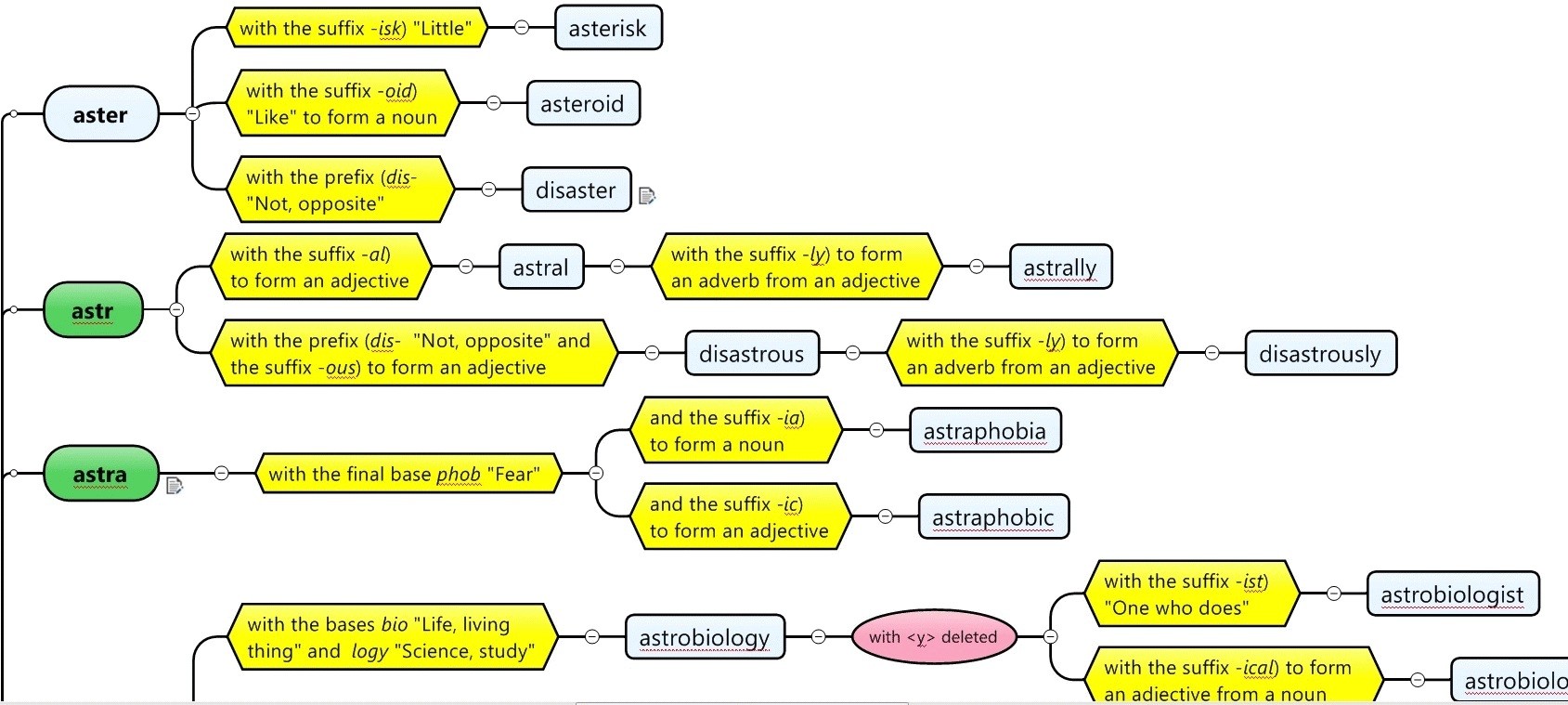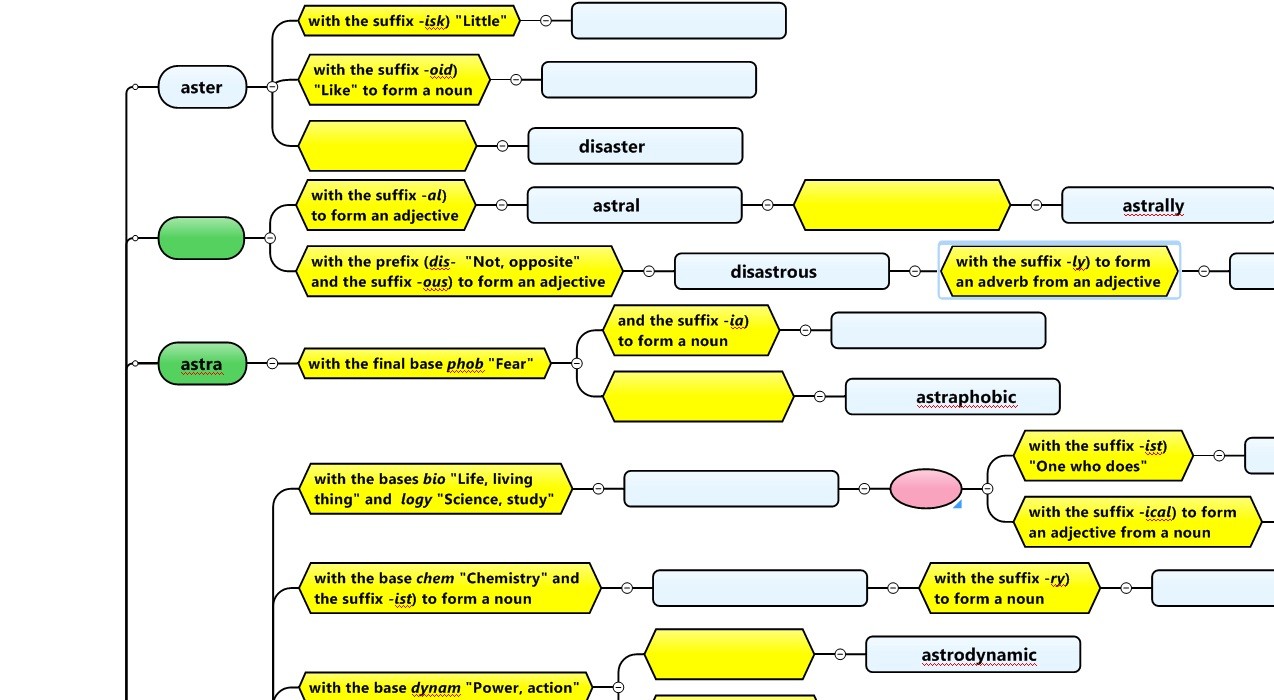Word Maps
Here is the Teacher's Version of the same sample as above:
 Teacher's Version
Teacher's Version
In the Teacher's Version all of the topics are filled in: (1) the green rounded rectangles list bound bases; (2) the light blue rectanges list words, a few of which (free bases) appear in the lefthand bases column but most of which appear further out on the branches (for the distinction between free and bound bases, see "Bases" in the Compendium of English Orthography); (3) the yellow hexagonal topics list the bases, prefixes, and suffixes that are added in building the words, often with bits of information about parts of speech and word derivation; (4) the pink topics list procedures that must be followed when combining elements – such as deleting silent final <e> 's, changing <y> to <i>, and twinning final consonants.
Some topics have notes that provide information for the teacher and links to relevant sections of the Compendium. In the full maps these notes can be revealed by hovering the cursor over or left-clicking the note icon. The sample above contains two such notes indicated by the icons lower-right of the astra and disaster topics. The note at astra says "Astraphobia is a morbid fear of thunder storms. The base astra comes from the ancient base meaning "star" but over time its sense came to refer just to lightning – though not in the Latin phrase ad astra "to the stars" where it keeps its original sense." The note at disaster says “Disaster is an old astrological term, as reflected in idioms like 'ill-starred plans' or Romeo and Juliet's 'star-crossed love'."
In general the recommendations in the introduction to Word Builds hold here — perhaps even more so since I've become more and more convinced about the value of relaxed discussion in this work. In any Word Map probably the major discussion questions are variations of "What connections can you see that could have led to such a spread of meanings from earlier senses? How could we have gotten from there to here? Even if you can’t define it exactly, given the meanings of its parts, what do you think this word could mean?" And should the students come up with goofy ideas about meanings, or structure, or history, no harm done. After all, the greatest learning job each of us ever does is to learn to speak our native tongue, and we do that pretty much on our own through discussion, often playful discussion, that is based on snippets and samples — and mistakes — that is, we learn our tongue by trial and error, or more accurately by trial and the elimination of error. It's no exaggeration to say that we learn to speak by screwing up.
Even when they deal with some very uncommon words — like, say, astraphobia in the sample above – a word they likely will never see nor say again – students still are learning about it in a context of more inclusive and deeper learning. (On the other hand, during the years I worked on spelling with third and fourth graders, the kids seemed to enjoy dealing with occasional big, hulking words, words they could use to wow their parents: "Dad, I don't think I can mow the lawn today. Looks cloudy and I can feel my astraphobia kicking in.")

Quiz Version
Filling in the first two blank word topics involves simply adding together the given elements: aster + isk) = asterisk; aster + oid) = asteroid. But filling in the first blank yellow topic involves determining what had to have been added there in order to get from aster to disaster. To fill in the blank green topic involves subtracting the -al) given in the yellow topic from the word astral — leaving the base astr. This kind of quiz involves students in modes of thought well beyond rote memorization and, depending on the pattern of topics left blank, can be very simple and easy or very difficult and demanding.
I recommend some abbreviations for students to use when filling in the
pink and yellow topics:
For "with final <e> deletion": ɇ or /e
For "with <y> changed to <i>": y>i
For "with the suffix -ion) to form a noun from a verb": -ion), v>n
Etc.
For a detailed table of contents of the maps, click here.
More Word Maps.
| Words and their Parts | Teacher |
|---|